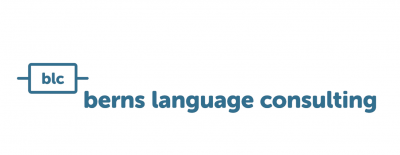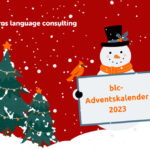At our Terminologie³ event, we reported on our project, which deals with ontologies from geodata. Today we tell you how geo-ontologies have developed further and what use cases and potentials they offer.
The idea: Queries via geodata
Geodata contains valuable, location-related information such as vegetation, terrain, water bodies, settlements or transport networks. In addition to being displayed in maps, they offer many other potential. Standalone or in combination with other data, they allow web-based queries about local conditions – in other words, “asking the map”. Three example use cases are outlined below:
1. Determination of the distance between two objects, for example between a vineyard and a transmission mast, in order to determine the radiation exposure of the good drop.
2. Comparison of natural reserve based on their size.
3. Tourist attractions in a specific location.
The Way: Structuring Data via Ontologies
And how do you manage to ask a card questions? With Ontologies! For this purpose, only the data structure behind the card must be standardized in an ontology language (e.g. RDFS, OWL) and processed in an ontology system. Individual objects (e.g. specific buildings) are provided with attributes (e.g. purpose = residential buildings). There are also relations between the objects, e.g. [Building] has [Position].
Section from a geo-ontology
Import mappings are used to bring the data into the desired structure, so that information can be obtained via queries. The query in Figure 1 shows what a query about residential buildings at a defined distance can look like. For example, this query type can be used to find vineyards at a defined distance from the transmission mast.
Figure 1: Example of a search request for buildings at a defined distance.
In the luggage: Terminology
What should never be missing when it comes to language data? The terminology!
Terms are managed using separate terminology objects. This means that the terms are defined, synonyms are assigned and other relevant metadata is filled. If there are IDs for certain functions in the existing data, the ID is assigned to the terminology. Mapping is then used to show which term is behind the code.
Example of a terminological entry in the ontology system
The goal: Geo-ontologies for all
And what do you do with geo-ontology? Make them available to the general public through a web interface.
Typically, queries are preconfigured in the backend and are then available to end users in a web interface. By this, the data can be opened to the general public, but with a restriction which data is accessible in what form.
There are no limits to the use cases for queries on map content: From the suitability of buildings for solar panels to recommendations for day trips on tourist portals to evacuation plans in the event of disasters.
But even on smaller scales, data processing in ontologies can be “life-saving”. Contact us, show us your data and we will show you your potential.
And if you can’t get enough of terminology, don’t miss out on our big Terminologie³ event:
On 14 & March 15, 2024 In Karlsruhe, we not only provide you with food and drink, but above all with valuable and practical knowledge of terminology, plenty of time to network and the opportunity to exchange terminology with others. Have we sparked your interest?
Then you should log in! Here you can find information on Terminologie³ – from practice, for practice! In Karlsruhe






